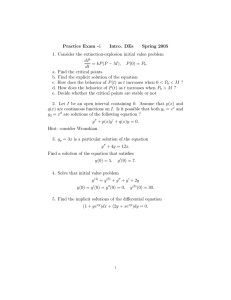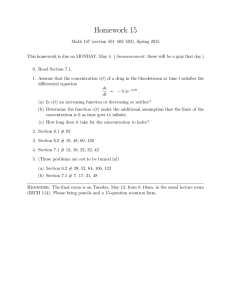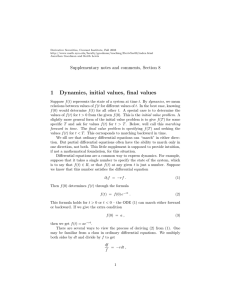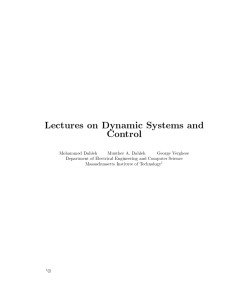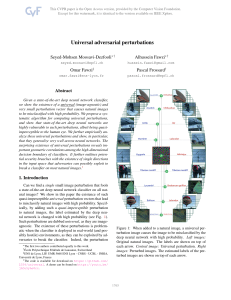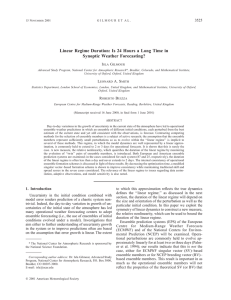L A T C2 F
advertisement
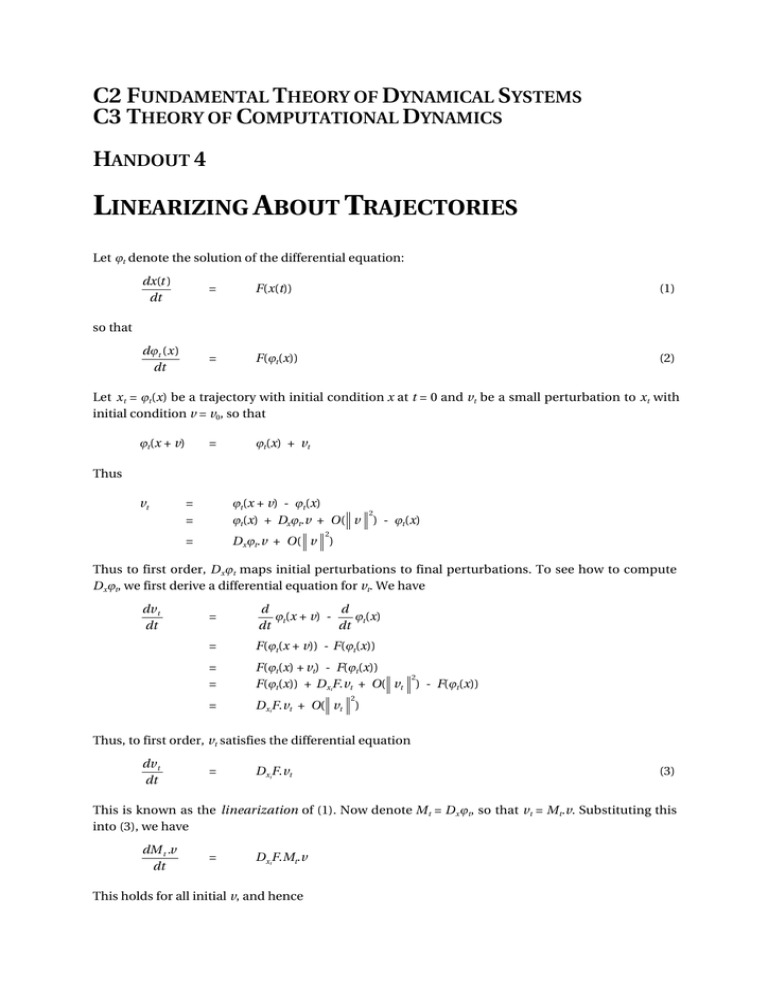
C2 FUNDAMENTAL THEORY OF DYNAMICAL SYSTEMS C3 THEORY OF COMPUTATIONAL DYNAMICS HANDOUT 4 LINEARIZING ABOUT TRAJECTORIES Let ϕt denote the solution of the differential equation: dx(t ) dt = F(x(t)) (1) dϕ t (x ) dt = F(ϕt(x)) (2) so that Let x t = ϕt(x) be a trajectory with initial condition x at t = 0 and vt be a small perturbation to xt with initial condition v = v0, so that ϕt(x + v) = ϕt(x) + vt Thus vt = = ϕt(x + v) - ϕt(x) 2 ϕt(x) + Dxϕt.v + O( v ) - ϕt(x) = D xϕt.v + O( v 2 ) Thus to first order, D xϕt maps initial perturbations to final perturbations. To see how to compute D xϕt, we first derive a differential equation for vt. We have dv t dt = d d ϕt(x + v) ϕt(x) dt dt = F(ϕt(x + v)) - F(ϕt(x)) = = F(ϕt(x) + vt) - F(ϕt(x)) F(ϕt(x)) + D x F.vt + O( vt = t D x F.vt + O( vt t 2 ) - F(ϕt(x)) 2 ) Thus, to first order, vt satisfies the differential equation dv t dt = D x F.vt t (3) This is known as the linearization of (1). Now denote M t = D xϕ t, so that v t = M t.v. Substituting this into (3), we have dM t .v dt = D x F.Mt.v t This holds for all initial v, and hence Linearizing Flows dM t dt = 2 D x F.Mt (4) t We thus see that the matrix Mt satisfies the same differential equation as each individual perturbation vt. To see why this should be so, let e(1), … , e(n) be the standard basis of unit vectors in Rn. Each e (i) evolves according to (3), that is de t(i ) dt = (i) D x F.e t t (1) (n) Thus the matrix whose columns are e t , …, e t must also satisfy this equation. But by the definition of Mt (i) et = Mt.e (i) (1) (n) and for any matrix B the ith column is just B.e (i). Thus the matrix whose columns are e t , …, e t is precisely Mt itself, and hence Mt satisfies (3). An alternative way of deriving (4) which is much slicker, but perhaps less informative is simply to differentiate (2) with respect to x: Dx dϕ t (x ) dt = D x(F(ϕt(x))) Using the chain rule we get: Dx dϕ t (x ) dt = D x F.D xϕt, t Assuming that ϕt is sufficiently regular to allow interchange of the order of differentiation: d D xϕt dt as required. = D x F.D xϕt, t


